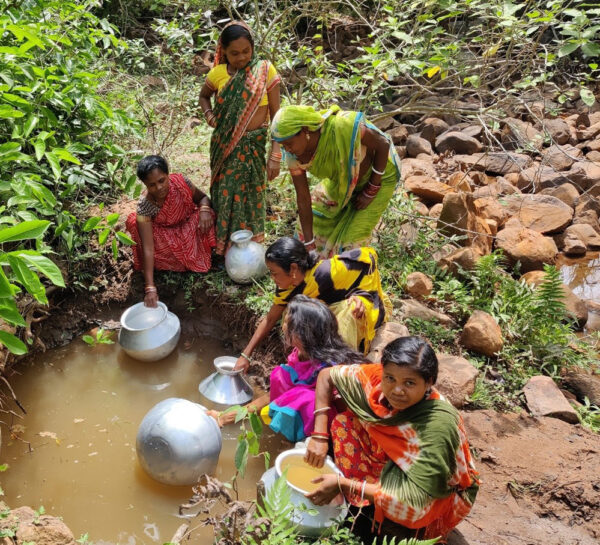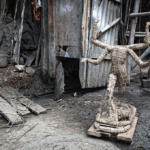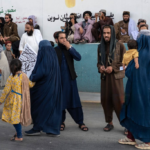The “Wet Wars” of India: Water ‘Crisis’, Not ‘Scarcity’ Anymore
Amidst all the chaos engulfing the political realm of India, another issue is stirring up, covertly, but surely. The “wet heat” has engulfed India, which is soon going to turn into a “wet blaze”. This overtly oxymoronic phrase explains the alarming crisis which India is going through; and will be going through in the near imminent future-regarding water. Hosting a whopping 18 percent of the world’s population, with only 4 percent of its water resources, India has remained on the hydrological edge for long. According to a recent report by the government’s policy think tank, the NITI Aayog, a considerable section is going to run into extreme water-based vulnerabilities. But can this largely ecological and techno-managerial issue be connected to the question of rights? And if so, what are the ways in which it can be done? The foremost step is to disintegrate water and understand it critically. Seemingly, hydrogen and oxygen aren’t the only elements which are to emerge if water is disintegrated. The disintegration of water unearths a range of pressing issues- both social and political, inimical to the dominant materialist and over-simplified approach. What more can water be, except being a resource to be consumed or utilised?
‘What’ is Water?
Among all the other environmental components which surround us, non-arguably, one of the most significant and interesting is; water. It IS the matter, matrix and medium for life, irrespective of anything and everything. But the question remains, what is water? It won’t be much of an over-iteration if we look at water as a multi-sectoral entity, which cuts across different socio-political and environmental categories and layers. Therefore, it is not just a mere resource which is to be consumed or utilized, but rather a ‘phenomenon’ embedded in our existence. Therefore, matter transcends physicality for water; delving into fragmented questions of quality, accessibility, affordability and reliability. Therefore, it gives rise to different “social instances of water”, and every instance of water gets connected to power; throwing light on broader concepts of equality and rights.
Therefore, to answer the abovementioned question about the nature of water, it is a ‘symptom’ or ‘reflection’ of the power dimensions; played out in the socio-political and ecological contexts. Since, water doesn’t exist outside of social and political spheres; it is absolutely essential to analyze and critically engage with its nature in the anthropogenic context. It unfurls and mirrors the array of complexities associated with human relations in more than one ways. Besides that, the hierarchy of the power patterns determining the distribution of potable water further indicates towards the plural dimensions of the engagements between human and natural entities. But the engagements are not essentially unifying, but rather contradicting or competing in nature. Hence, notion of fairness and rights in the hydro-social context are situated, relational and context-sensitive. The multi-modal forms of governance and managerial engagements between human and the nature, have their own distinct manifestations in the context of water.
Water ‘Speaks’ in India
The nature of civil society of India is evidently different from that of the west; which is essentially fragmented and non-homogenous in nature. This is growing increasingly exclusive in nature, with the unilateral focus on urban-based development and an emerging middle class. India has a distinct form of monolithic state constituted in part, by ‘omnivores’ who thrive on varied resource pools, as borrowed from Mawdsley and Glynn Williams (2006). Despite several promises and reforms from the supply side; i.e. the government and other controlling or managing authorities, environmental empiricism bears testimony to the dearth of constructive acknowledgement and effort on the part of the governmental policies or actions. Subsequently, a considerable lack of proper awareness, training and engagement of the local communities prevails.
The clientalistic nature of the distributive mechanisms within the state structure of India contributes to this problem to a great extent. Given the already existing complexities which characterize the Indian society, the contention gets quite intense over here. With more than a few forms of stratification existing within Indian social schema, the issue of water gets embedded with each of them, thus giving a different shape of the idea of the ‘hydro-social’. Therefore economy, language, religious community and even caste get entangled with water and each of it’s produced and reproduced “socio-political instances”. Therefore as the basic identity of water as a heterogenous entity is being argued; India emerges as an interesting parable. It is one of the most rapidly socio-ecologically converted phenomena in India, by the the capitalist forces. What conversion here essentially involves includes appropriation, alteration and patterned distribution of material water. Along with it, the socio-legal and cultural discourses of water have also been transformed in one way or other, in order to accrue benefits, which are distributed in a patterned hierarchical manner as well.
Gangrened Gangnauli: Hydro-sociality and A Case of Systemic Deprivation
Several socio-ecological instances bear testimony to this utterly complex, but ravenously real phenomenon. We need to take a look towards the district called Baghpat located towards the western parts of the state of Uttar Pradesh in India, barely fifty kilometers away from the national capital. The district has been referred to as the “cancer district” in several sources, and the rivers, flowing in the vicinity, as “cancer rivers”, due to the alarmingly copious amounts of lead, mercury, magnesium, arsenic and other forms of toxic effluents which remain dissolved in the river water. But the most awe-invoking part of the case is that, these rivers are the only source of drinking and irrigational water for the district. However appalling it might sound, this remains the objective reality in the concerned area. Why is it so? It is because of the two-pronged incursion which the district faces. The incessant and ignorant dumping of sewerage and waste into the river, with the courtesies from the sugar mills in Shamli, paper factories in Sikka Silawar, government-owned slaughterhouses in Karo-Babri- all standing on the embankments of the assorted rivers. This gets even more pathetically riveting with the fact that, these aren’t local seasonal streams we are talking about in this context. These are a few of the major perennial rivers which have shaped the geography and identity of India-namely Ganga, Yamuna, Kali Nadi (Krishna) and Hindon. Thus, it shows that power flows over here surely and evidently; just through the course of a river, rather than the barrel of a gun. With partially orchestrated efforts and faulty government installed tanks, without any form of further addressing and acknowledgements; the villagers keep using and drinking this very water, with occasional instances of backyard bore-wells. But how long are these going to stay, or be able to put up against the mammoths of construction, contamination and cancer?

But the question which still remains is that, how does the power relations get embedded in this form of crisis? An interesting case to back this up, can be found at Ibrahimpur Majjra, which is a village located on the opposite banks of the river, within a radius of about five hundred meters from Gangnauli. They had no such ambush of ecological indictments. They had been blessed and endowed with a persistent source of potable water. So, is the nature to be held responsible for such selective endowments and anomalous pattern of blessings? More interestingly, reports have found out that there has been a socio-political tension between the Jats (a raised caste), and the Kashyaps (a lower conglomerate within the region). The Jats have most of the holding within the farmlands in and around the region. Thereby, ipso facto, most of the clean and continuous supply of usable water favours the Jats, leaving the lower income and socially diminished groups to wrench in thirst and pain. On top of that, cancer being a comparatively newer phenomenon, paired with partial awareness, gives rise to various social taboos within the villages. Therefore, quite like Du Bois’ conception of dual or double consciousness, this gives rise to “dual marginality”.

Way-outs from Hydro-Hell: Reflections in Theory and Praxis
Hence, like every other political arena, the hydro-social sphere also has its own forms of injustice, which prevails. And the Rawlsian idea of distributive fairness isn’t just enough, to acknowledge, address and redress the overly complicated situation. The question over here stretches over to the aspects of ‘recognition’ and ‘participation’ of the eco-oppressed sections of the population, transcending the question of ‘distribution’. David Schlosberg, Nancy Fraser and Martha Nussbaum have immensely contributed to this strand of intellectual pathways, essentially giving rise to a broader concept of ‘Environmental Justice’, instead of the much restricted preceding version of “Ecological Justice”. The varied patterns of legitimacy and chequered relation among the claimants of justice make this theorization a compelling one. In recent years, theorization on water has taken an intellectually enriching turn towards issues of ethics, human rights, ecological rights, identity, representation, scale and ‘just sustainability’. Fairness, patterns of legitimacy, hierarchy among the claimants of justice, cultural notions, as well as the socio-legal factors which legitimize water rights and create water problems simultaneously; emerge very clearly. come into the ambit of intellectual and empirical scrutiny. The case of Gangnauli remains a striking edifice to these glaring factors affecting the hydro-social dimensions in a specific geographical scale
Therefore, to sum up, the notion of the ‘right to water’ is constantly being stretched and expanded to include a much broader conception of ‘water rights’. After all, the basic gifts of nature, and fundamentals of survival are being robbed off, while marginalized sections keep sinking in abject despair, absurd conditionality and utter helplessness with ever-proliferating layers of existential burden.

About the Author …
Saptak Mondal is currently pursuing his Doctoral Degree as Junior Research Fellow from Jadavpur University, Kolkata. His field of specialization remains Political Ecology, Hydro-Politics and Environmental Justice. He is extremely passionate about Political Philosophy and Theory. A prime imperative of his intellectual pursuit is to explore the nuances of political phenomenology and its implications in Indian politics. One of the areas of his significant interests over here is the entanglement of ‘time’ and ‘space’ in political phenomena and social processes.










